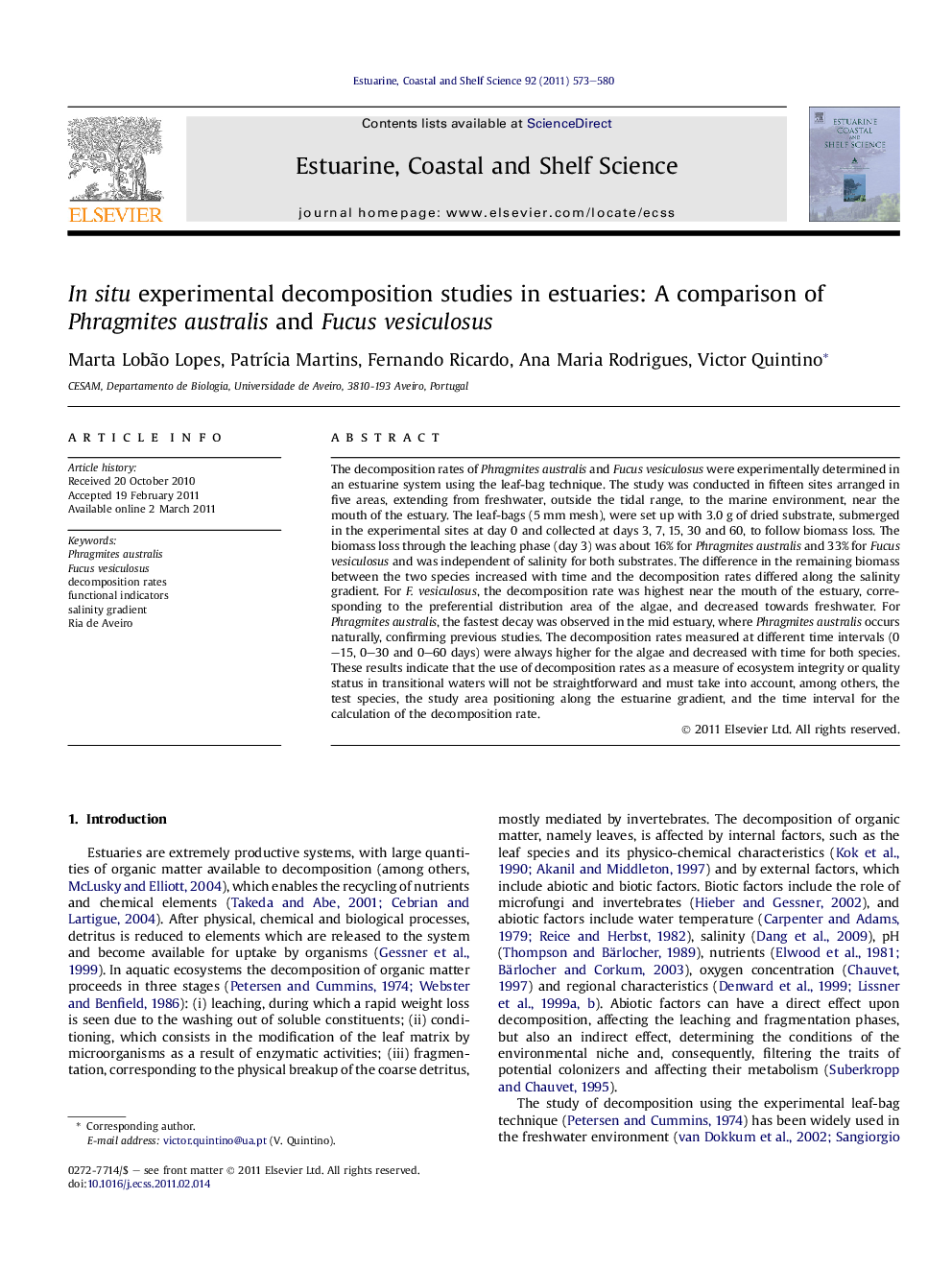| Article ID | Journal | Published Year | Pages | File Type |
|---|---|---|---|---|
| 4540486 | Estuarine, Coastal and Shelf Science | 2011 | 8 Pages |
The decomposition rates of Phragmites australis and Fucus vesiculosus were experimentally determined in an estuarine system using the leaf-bag technique. The study was conducted in fifteen sites arranged in five areas, extending from freshwater, outside the tidal range, to the marine environment, near the mouth of the estuary. The leaf-bags (5 mm mesh), were set up with 3.0 g of dried substrate, submerged in the experimental sites at day 0 and collected at days 3, 7, 15, 30 and 60, to follow biomass loss. The biomass loss through the leaching phase (day 3) was about 16% for Phragmites australis and 33% for Fucus vesiculosus and was independent of salinity for both substrates. The difference in the remaining biomass between the two species increased with time and the decomposition rates differed along the salinity gradient. For F. vesiculosus, the decomposition rate was highest near the mouth of the estuary, corresponding to the preferential distribution area of the algae, and decreased towards freshwater. For Phragmites australis, the fastest decay was observed in the mid estuary, where Phragmites australis occurs naturally, confirming previous studies. The decomposition rates measured at different time intervals (0–15, 0–30 and 0–60 days) were always higher for the algae and decreased with time for both species. These results indicate that the use of decomposition rates as a measure of ecosystem integrity or quality status in transitional waters will not be straightforward and must take into account, among others, the test species, the study area positioning along the estuarine gradient, and the time interval for the calculation of the decomposition rate.
► We study experimental decay of algae and macrophyte in a full salinity gradient. ► The alga decomposed faster than the macrophyte everywhere along the gradient. ► Alga decomposition was faster near the sea and diminished towards freshwater. ► Macrophyte decomposed faster at the estuarine head and diminished towards the sea. ► Macrophyte and alga decay are promising functional indicators in transition waters
